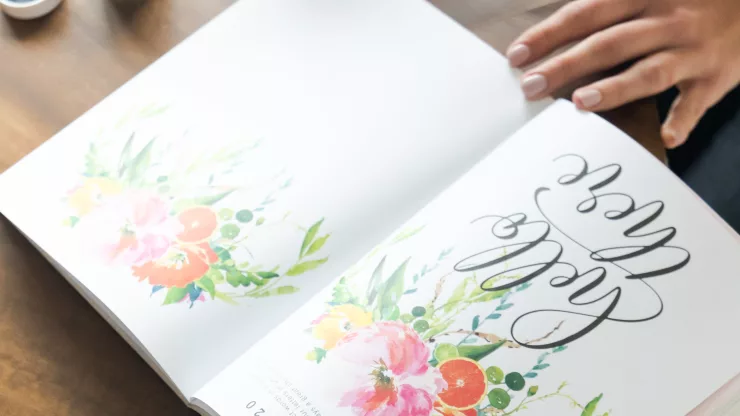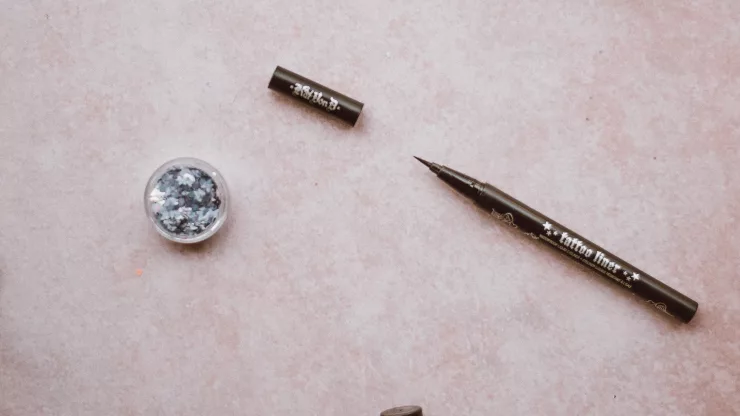Calligraphy as a Form of Art
Calligraphy is the art of writing beautifully.
It has been around for thousands of years and is still popular today. Calligraphy is a form of self-expression that allows you to create beautiful letters and words.
It is a form of art that can be enjoyed by people of all ages and backgrounds. In this article, we will explore the benefits of calligraphy practice and how it can lead to happiness.
Jump to Section
Benefits of Calligraphy Practice
Calligraphy practice has many benefits. It can help improve your handwriting, concentration, and creativity.
It is also a great way to relax and reduce stress. Here are some of the benefits of calligraphy practice:
- Improves handwriting: Calligraphy practice can help improve your handwriting by teaching you proper letter formation and spacing.
- Increases concentration: Calligraphy requires concentration and focus, which can help improve your overall concentration and focus.
- Boosts creativity: Calligraphy is a form of art that allows you to express your creativity and imagination.
- Reduces stress: Calligraphy practice can be a relaxing and meditative activity that can help reduce stress and anxiety.
Getting Started: Tools and Techniques
To get started with calligraphy, you will need some basic tools. Here are some of the tools you will need:
- Calligraphy pen: A calligraphy pen is a special pen that has a flat or angled tip that allows you to create thick and thin lines.
- Ink: You will need ink that is specifically designed for calligraphy pens.
- Paper: You can use any type of paper, but it is best to use paper that is smooth and thick.
Here are some basic techniques to get you started:
- Hold the pen at a 45-degree angle: This will allow you to create thick and thin lines.
- Use light pressure for thin lines and heavy pressure for thick lines.
- Practice basic strokes: Practice creating basic strokes such as the upstroke, downstroke, and oval.
Tips for Improving Your Calligraphy Skills
Here are some tips to help you improve your calligraphy skills:
- Practice regularly: The more you practice, the better you will become.
- Use guidelines: Use guidelines to help you create consistent letter heights and spacing.
- Experiment with different styles: Try different calligraphy styles to find the one that suits you best.
- Be patient: Calligraphy takes time and practice to master. Don’t get discouraged if you don’t see immediate results.
Calligraphy and Mindfulness: A Path to Happiness
Calligraphy practice can be a form of mindfulness, which can lead to happiness.
Mindfulness is the practice of being present in the moment and fully engaged in what you are doing.
Calligraphy requires concentration and focus, which can help you be more mindful. Here are some ways that calligraphy can lead to happiness:
- Reduces stress and anxiety: Calligraphy practice can be a relaxing and meditative activity that can help reduce stress and anxiety.
- Improves focus and concentration: Calligraphy requires focus and concentration, which can help improve your overall focus and concentration.
- Increases self-awareness: Calligraphy can help you become more aware of your thoughts and feelings, which can lead to greater self-awareness.
- Boosts self-esteem: Creating beautiful calligraphy can boost your self-esteem and confidence.
Sharing Your Calligraphy Art with the World
Once you have mastered calligraphy, you may want to share your art with the world. Here are some ways to share your calligraphy art:
- Social media: Share your calligraphy art on social media platforms such as Instagram, Facebook, and Pinterest.
- Etsy: Sell your calligraphy art on Etsy, a popular online marketplace for handmade goods.
- Greeting cards: Create greeting cards with your calligraphy art and sell them online or at craft fairs.
- Art shows: Participate in local art shows and exhibit your calligraphy art.
FAQ
- What type of paper is best for calligraphy?
Smooth and thick paper is best for calligraphy. You can use any type of paper, but it is best to avoid paper that is too thin or rough. - What is the best way to hold a calligraphy pen?
Hold the pen at a 45-degree angle. This will allow you to create thick and thin lines. - Can calligraphy be learned by anyone?
Yes, calligraphy can be learned by anyone with practice and patience. It is a skill that can be developed over time.

With a deep passion for personal development, Ben has dedicated his career to inspiring and guiding others on their journey towards self-improvement.
His love for learning and sharing knowledge about personal growth strategies, mindfulness, and goal-setting principles has led him to create My Virtual Life Coach.
Contact Ben at [email protected] for assistance.




